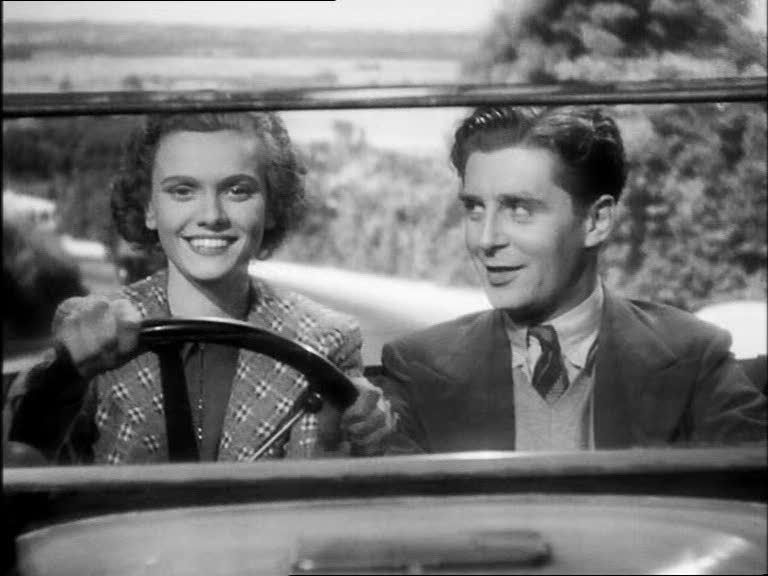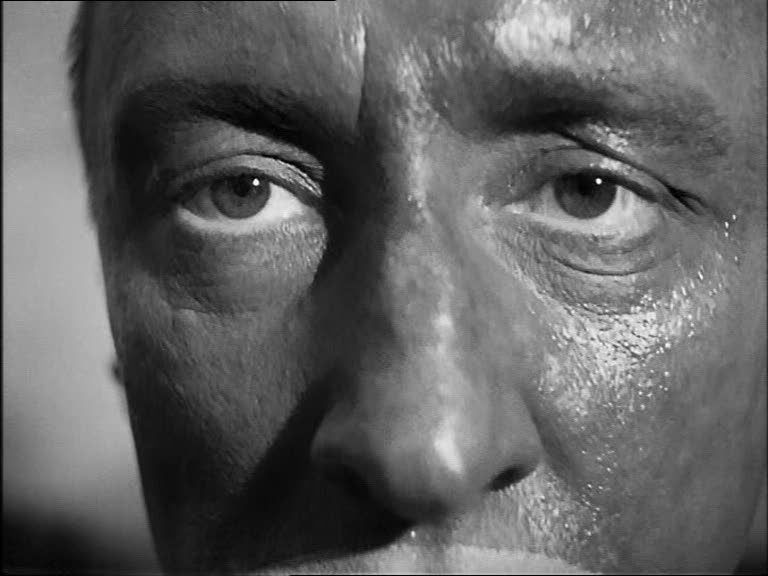
Alfred Hitchcock primarily made his reputation with his many "wrong man" thrillers, chase adventures in which men were wrongly accused of horrible crimes and went on the run while trying to prove their innocence. His early film Young and Innocent is in some ways an example of this specialized genre that Hitch helped create, but more accurately it could probably be called a wrong man comedy. Of course, most of Hitch's films have their share of humor and wit, and his British work in particular is often light and funny. But this film is almost completely lacking the texture of a murder mystery or thriller. It's more like a farce, a caper flick about a pair of young people who meet and have a wild series of adventures, obviously falling in love along the way. That the young man is accused of murder, and the young woman is the local chief constable's daughter, is almost incidental to the film's free-spirited good humor and sense of fun. All that matters is that they're young and attractive and quick to smile, and they head off traipsing around the countryside together.
At least, that's what the film becomes, but its opening is a different matter. The first scene is a prime example of Hitchcock's inventive staging, his way of catching the audience's attention right from the start. The film's first image is a closeup of a woman, right in the middle of an obviously angry conversation. She steps aside, out of the closeup, her form shifting out of focus as she steps back within the frame, and as she does a man steps forward into a closeup of his own, pausing to light a cigarette before continuing the argument. Within a single shot, Hitchcock has already established a kind of chase motif, with the man sinisterly pursuing the woman, even following her through the sequence of her blocking within the shot. When the woman turns up dead the next morning, strangled with a belt from a raincoat and then thrown in the ocean, the audience already knows exactly who did it, even though they didn't see it. Everyone within the film, however, suspects the young Robert Tisdall (Derrick De Marney), who shows up at the scene and happens to know the dead woman, an actress who'd been helping him out because of some writing work he'd done for her. It doesn't help that the grateful woman left him some money in her will, supplying Robert with a convenient motive, and that he had (and lost) a raincoat just like the one whose belt was used in the murder.
Things don't look good for Robert, but he quickly (and cleverly) escapes, hiding in plain sight by slipping away from his guards and sitting in the audience at the courtroom where he was supposed to appear, then in the confusion posing as one of the volunteers looking for himself. Soon enough, he falls in with Erica (Nova Pilbeam), the daughter of the local constable who is initially distrustful of Robert but soon comes to believe in his innocence. The two then proceed to wander around the country, looking for Robert's missing raincoat. As soon as one stops to think about it, this is really one of Hitchcock's most preposterous McGuffins — does Robert expect to run into the police station yelling "I've found a raincoat" and simply be set free afterward? The whole thing is silly and contrived, so it's a good thing that Hitchcock mostly pays it little mind. He's having too much fun setting up even sillier and more contrived situations for Robert and Erica to deal with while on their search. Erica's attempt to concoct an alibi for her disappearance backfires when her nosy, gossipy Aunt Sally (Mary Clare) ropes her and Robert into a child's birthday party, from which they continually attempt to disentangle themselves while playing games like blind man's bluff.

There's even more fun to be had once the duo pick up the tramp Old Will (Edward Rigby), who supposedly might be able to pick out the real murderer but who's really just there because he's funny. Robert and Erica dress up the old guy in fancy duds so they can sneak him into a hotel where they think the murderer is staying — don't ask why, it doesn't make any more sense than anything else in the plot. Hitchcock gets a lot of mileage out of Rigby's comic performance, his fumbling with his shirt cuffs and deer-in-the-headlights stare when he has to ask for a table or order tea. And the sequence of him trying to dance around the room with Erica while keeping an eye out for the murderer is downright hilarious, as he waddles duck-like through his dance steps. More problematic is the fact that the final sequence prominently features a band in outrageous blackface, complete with heavy lips circled around their mouths. And among them is the murderer, hiding behind the facepaint. The film's climax is essentially centered around an extended blackface gag. Despite the formal inventiveness of the scene — a series of lengthy tracking shots that establish the murderer's location within the large ballroom — this is a really uncomfortable way to close out such a sprightly, good-humored film.
The blackface does serve Hitchcock well in that its offensiveness distracts, at a crucial moment, from the complete absurdity of his story, which after all Robert and Erica's investigation and struggles, ends with the murderer simply giving himself away and screaming his confession out to the whole room. It's an absurd deus ex machina, but no more absurd than the question of the murderer's whereabouts throughout the whole rest of the story. After all, the opening scene establishes that he's the murdered woman's husband, or ex-husband, a fact that the film then dismisses rather quickly.
This is all very far from being one of Hitchcock's tightest or most elegantly made films, though there's still a rough ingenuity to the comedic scenes and the small touches Hitch brings to the scenario. At the beginning of the film, he repeats the trick from The 39 Steps where a scream blends into the sound of a train whistle; this time, two women's shrieks of horror are interrupted by a quick insert of a flock of cawing seagulls. There's a similar playfulness to offhand gags like the way the fleeing couple throw a teacup out of the window of their car and, without realizing it, foil some pursuing cop cars. The couple themselves are certainly having a lot of fun through it all. De Marney and Pilbeam seem to be lightweight but appealing actors, from that particular school of British acting that's all earnest good humor and broad grins and "cheerio chap," but their unpretentious manners are perfectly suited to their naïve young characters. This is unquestionably minor Hitchcock, but it shows the director at his most flippant and easygoing, carelessly mashing together his characteristic elements into a silly but entertaining little trifle.

2 comments:
Well, in the end I must agree that this particular Hitchcock film is a "silly but entertaining trifle." And there are a mumber of tracking shots (as you point out) that stay in the memory, like for example the one that starts in the hotel loungs and comes to rest finally on the blocked face of a musician playing in a dance band. The accomplished cinematographer Bernard Knowles, who photographed THE 39 STEPS and SABOTAGE is of course a major asset, but of course this film is a re-working of the former film. Although this film is admittedly "fair" Hitchcock, I must admit, despite your contention that it may have been an ill-advised way to end the film, i did appreciate that sinister climax, as well as the revelation that heroine only knows the villian because his eyes "twitch."
Your wonderful prose, which analyzes the lot's progression step by step is typified by this enagaging passage:
"The film's first image is a closeup of a woman, right in the middle of an obviously angry conversation. She steps aside, out of the closeup, her form shifting out of focus as she steps back within the frame, and as she does a man steps forward into a closeup of his own, pausing to light a cigarette before continuing the argument. Within a single shot, Hitchcock has already established a kind of chase motif, with the man sinisterly pursuing the woman, even following her through the sequence of her blocking within the shot. When the woman turns up dead the next morning, strangled with a belt from a raincoat and then thrown in the ocean, the audience already knows exactly who did it, even though they didn't see it."
Robert and Erica never kiss! My wife and I just watched Young and Innocent and we noticed something. Erica and Robert never actually kiss. Is there any story behind that? Any bit of trivia? Is Erica thought to be too young a heroine for that to be appropriate? Is it enough that she seems to have a worthy young man to start courting? It was a great performance by the way. We quite enjoyed the film and story.
Post a Comment